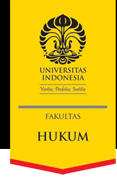Abstract
The constitutional amendments that took place from 1999 to 2022 emphasized that Indonesia adheres to a presidential system of government. One way that is often discussed to increase the effectiveness of the presidential government system is to hold elections simultaneously by implementing the presidential nomination threshold which is now regulated in article 222 of Law Number 7 of 2017 concerning Elections which provides conditions for political parties to obtain a minimum of 20 percent of DPR seats. or 25 percent of valid national votes to be able to nominate candidates for President and Vice President. In practice, this provision always invites controversy and has been repeatedly tested at the Constitutional Court. This article will explain in detail how the threshold for presidential candidacy is set in Indonesia. Then, this article will also analyze the threshold for presidential candidacy according to the decision of the constitutional court in 2022-2023. This article was prepared using doctrinal research methods. The research results show that the threshold norms for presidential candidacy are not regulated in the 1945 Constitution of the Republic of Indonesia, the constitution only regulates the victory threshold as stated in article 6 paragraph (3). The threshold norms for presidential candidacy are regulated in detail in laws that regulate the technical implementation of general elections, such as Law No. 23 of 2003, Law No. 42 of 2008, and Law No. 7 of 2017. The Constitutional Court in its decisions always emphasized that the threshold norm for presidential candidacy is an open legal policy and does not conflict with the 1945 Constitution of the Republic of Indonesia. The Constitutional Court considered that the threshold norm for presidential candidacy had a positive impact on a strong presidential government system.
Bahasa Abstract
Amandemen konstitusi yang berlangsung sejak tahun 1999 hingga 2022 mempertegas bahwa Negara Indonesia menganut sistem pemerintahan presidensial. Salah satu cara yang sering dibahas untuk meningkatkan efektivitas sistem pemerintahan presidensial adalah dengan melaksanakan pemilu secara serentak dengan menerapkan ambang batas pencalonan presiden yang sekarang diatur dalam pasal 222 UU Nomor 7 Tahun 2017 tentang Pemilu yang memberikan syarat kepada partai politik harus mendapatkan minimal 20 persen kursi DPR atau 25 persen suara sah nasional untuk bisa mengusung Calon Presiden dan Wakil Presiden. Dalam praktiknya, ketentuan ini selalu mengundang kontroversi dan sudah berulang kali diuji di Mahkamah Konstitusi. Tulisan ini akan menjelaskan secara detail bagaimana pengaturan ambang batas pencalonan presiden di Indonesia. Kemudian, tulisan ini juga akan menganalisis bagaimana ambang batas pencalonan presiden menurut putusan mahkamah konstitusi tahun 2022-2023. Tulisan ini disusun menggunakan metode penelitian doktrinal. Hasil penelitian menunjukkan bahwa norma ambang batas pencalonan presiden tidak diatur dalam UUD NRI Tahun 1945, konstitusi hanya mengatur ambang batas kemenangan yang tercantum pada pasal 6 ayat (3). Norma ambang batas pencalonan presiden diatur secara detail pada undang-undang yang mengatur tentang teknis pelaksanaan pemilihan umum seperti UU No.23 Tahun 2003, UU No.42 Tahun 2008, dan UU No.7 Tahun 2017. Mahkamah Konstitusi dalam putusan-putusan nya selalu menegaskan bahwa norma ambang batas pencalonan presiden merupakan kebijakan hukum terbuka dan tidak bertentangan dengan UUD NRI Tahun 1945. Mahkamah Konstitusi menilai bahwa norma ambang batas pencalonan presiden memberikan dampak positif kepada sistem pemerintahan presidensial yang kuat.
References
Edwin, Normand. “Perludem Jelaskan Bahaya Presidential Threshold 20% Bagi Indonesia.” Hukumonline.com, 2023. https://www.hukumonline.com/berita/a/perludem-jelaskan-4-bahaya-presidential-threshold-20-bagi-indonesia-lt5b4c44b3e5ffb/.
Konstitusi, Mahkamah. “Putusan Nomor 80/PUU-XX/2022 Partai Buruh Dkk,” 2022.
Rafy, Muhammad, Edi Haskar, and Nessa Fajriyana Farda. “PENERAPAN SISTEM PRESIDENTIAL THRESHOLD DALAM PELAKSANAAN PEMILIHAN UMUM DI INDONESIA.” Otentik Law Journal 1, no. 1 (2023): 75–88.
Santoso, Rahmat Teguh. “Rekonseptualisasi Ambang Batas Pencalonan Presiden Dan Wakil Presiden (Presidential Threshold) Dalam Pemilu Serentak.” Jambura Law Review 1, no. 1 (2019): 100.
Sodikin, Sodikin. “Pemilu Serentak (Pemilu Legislatif Dengan Pemilu Presiden Dan Wakil Presiden) Dan Penguatan Sistem Presidensial.” Jurnal Rechts Vinding: Media Pembinaan Hukum Nasional 3, no. 1 (2014): 19–31.
UU Nomor 23 Tahun 2003, LN Tahun 2003 No. 93, Pasal 101. “Undang-Undang Tentang Pemilihan Umum Presiden Dan Wakil Presiden,” 2003.
UU Nomor 23 Tahun 2003, LN Tahun 2003 No. 93, Pasal 5 ayat (4). Undang-Undang tentang Pemilihan Umum Presiden dan Wakil Presiden Undang-Undang tentang Pemilihan Umum Presiden dan Wakil Presiden. (2003).
UU Nomor 23 Tahun 2003, Pasal 5 ayat (4). “Undang-Undang Tentang Pemilihan Umum Presiden Dan Wakil Presiden, UU Nomor 23 Tahun 2003, LN Tahun 2003 No. 93, Pasal 5 Ayat (4),” 2003.
UU Pemilu, Pasal 198. “Undang-Undang Republik Indonesia Nomor 7 Tahun 2017 Tentang Pemilihan Umum, LN Tahun 2017 No.6109, Selanjutnya Disebut UU Pemilu, Pasal 198,” 2017.
Recommended Citation
Soeoed, Mochamad Rizky
(2023)
"Analisis Pengaturan Ambang Batas Pencalonan Presiden Menurut Putusan Mahkamah Konstitusi Tahun 2022-2023,"
Jurnal Konstitusi & Demokrasi: Vol. 3:
No.
2, Article 4.
DOI: 10.7454/JKD.v3i2.1309
Available at:
https://scholarhub.ui.ac.id/jurnalkonsdem/vol3/iss2/4

